
Sure enough, Poppy’s symptoms resolved but a few days later, my 4-year-old Chihuahua mix Lilly developed similar signs. Unlike Poppy, Lilly started to get worse and developed a thick, green nasal discharge. I started oral antibiotics but the next day she was extremely lethargic and wouldn’t eat. Due to these symptoms, mild dehydration and her reluctance to eat I admitted Lilly to the hospital for intravenous fluids and medications. While she was there I took chest x-rays which revealed her upper respiratory infection had progressed to pneumonia.
After twenty four hours Lilly was looking much brighter and I decided to bring her home for further care. The next day she was depressed again but still eating and not having any respiratory difficulty. I started another antibiotic and a medication called Mucomyst which helps break up congestion and acts as an anti-oxidant to protect her lung tissue. I also began what Lilly now considers torture: steam baths to help clear out her airways. This is accomplished by closing her in the bathroom and letting the hot water from the shower fill the room with steam.
About one day after starting the new medications, Lilly seems a little brighter and is eating well but is still not acting like herself. If she continues to be depressed I will bring her back into the hospital and take follow-up chest x-rays to assess the progression of her pneumonia. I am keeping an extremely close eye on her progress and will continue to treat aggressively.
Caused by Canine Influenza?
The answer is… maybe. Lilly’s original infection could have been canine influenza, Bordetella, parainfluenza or any of the many unnamed viruses lurking about the dog world.
Believe it or not, I won’t be testing Lilly for canine influenza. For one thing, although the technology* is available, the test results take about three weeks to get back. More importantly, though, there is nothing the test could reveal that will affect how I proceed with Lilly’s treatment. My main goal now is to treat Lilly’s pneumonia symptoms and help her regain her health – and it won’t make any difference whether or not her condition was originally caused by canine influenza.
I say this to remind pet owners not to panic about canine influenza. Even if your dog does come down with it, in the vast majority of cases it will resolve itself with a minimum of treatment. Should a more serious infection develop, like pneumonia, your veterinarian is ready to treat this – no matter whether the root cause is canine influenza, Bordetella, or another virus.
* Cornell University offers a paired serology test that is known as the gold standard for diagnosis of canine influenza. The kennel in Fairfax with the alleged canine flu outbreak did NOT use this test.






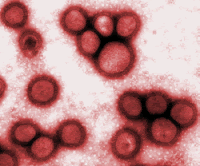






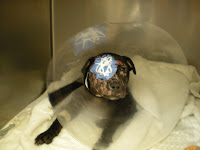
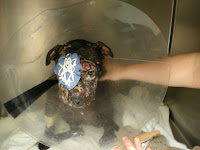
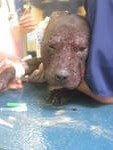
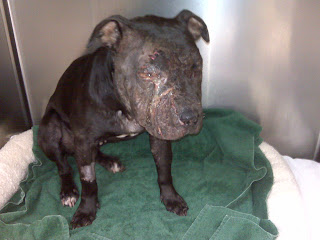

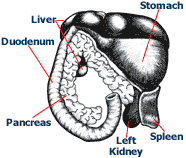 We are not sure what causes pancreatitis, but there are many suspected causes, with pet obesity and ingesting a very fatty meal being at the top of the list.
We are not sure what causes pancreatitis, but there are many suspected causes, with pet obesity and ingesting a very fatty meal being at the top of the list.

